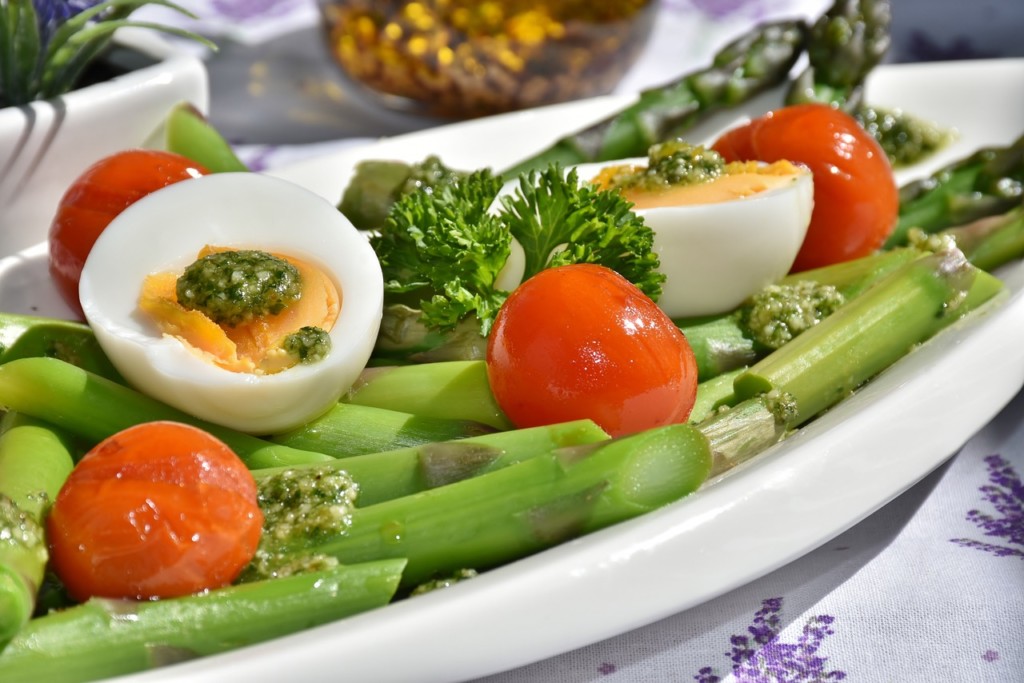Visit ketogenic diet (keto in English) is a very special way of eating that consists of replace carbohydrates (starches and sugar) by the lipids (fats), in order to encourage the organism to get into ketosisa state in which it draws its energy from ketonesmolecules produced by the liverrather than using the glucose as an energy source.
Table of contents
HideFind this chapter in PODCAST format:
This way of eating was originally developed to combat epilepsy in the early 20th century, before falling into disuse. In the early 21st century, it once again became popular, for its impressive weight-loss effectsas well as for its supposed benefits on chronic illnesses of varying severity, from simple allergies to cancer.
Its "soft" version is the low-carb high-fatalso known as the Atkins diet, which consists of reducing the intake of carbohydrates. carbohydratesfor the benefit of lipidsThis does not mean permanent nutritional ketosis. The diet low-carb high-fat is a way for some sedentary individuals to avoid overloading the body with unnecessary glucose, which can lead to weight gain and loss of energy.
This type of food is said to have many health benefits, including increased energy, weight loss, lower blood sugar levels, and so on. blood glucose and encouraging effects on certain chronic diseases such as diabetes or cancer, as a complement to medical treatment.
This content is part of the guide Blooness, the guide to the ideal human diet, the summary of which you can find here 🌱🥑
Many find it in their interest to reduce carbohydrates of their diet, but this can't be done overnight, without a minimum of knowledge on the subject. Indeed, there are a number of obstacles that could stand in the way of successfully implementing this type of diet.
In this guide, you will find all the information you need to learn how to tame thelow-calorie diet carbohydrates and rich in lipid. In addition to detailed plan definitions low-carb and ketoyou'll learn how to :
French-speaking subscribers will receive the newsletter in French, and all others will receive an English version.
- which foods and beverages to choose in these two diets
- which foods are banned
- which food supplements are essential for the proper implementation of this diet
- how to implement this type of diet in the context of a chronic illness, including Dr Laurent Schwartz's metabolic treatment.
- how to "veganize" the diet ketogenic
- and much more...
This ultimate guide to the ketogenic, low-carb diet is the second major part of the Blooness guidea personal development white paper that synthesizes best practices in lifestyle and personal development. nutrition to improve health, increase energy and maximize life expectancy. The first part was an introduction to the basics of nutrition.
Before getting to the heart of the low-carbohydrate diet, let's take a look at what happened in the history of the 20th century to make our diet primarily carbohydrate-based, rather than fat-based.
As a reminder, foods rich in carbohydrates include milk, starchy foods (rice, pasta, cereals), legumes, and fruit, vegetables, juices, cookies, sodas, candies, cakes, and other commercial products.
Lipids are fats, found in small oily fish, vegetable oils, oilseeds, avocados, meats, cheese and butter, but also in fried foods and certain processed industrial products.
In the common imagination, eating fat makes you look fat. But the opposite may well be true. Let's take a step back in time...
Summary of the ultimate guide to the ketogenic and low-carb high-fat diet
Here are all the contents free of charge of this ketogenic and low-carb guide in podcast format (premium content is available in audio format). in articles reserved for Blooness members) :
Part 1: The origins of the predominance of sugar and carbohydrates
Understand why and how sugar, and more generally carbohydrates, have formed the basis of our diet, against all dietetic and health logic.
- The origins of sugar and carbohydrate dominance
- The origin of fat hunting: Ancel Keys and the 7 countries study
- The demonization of fats: an agro-industrial plot?
- Fat's return to favour: eat fat to lose weight and stay healthy?
Part 2: Introduction to the Low Carb High Fat and Ketogenic diets for beginners
Reducing carbohydrates is the No. 1 pillar of the Blooness diet. In this section, you'll learn the basics and how to get started with this type of diet.
- The Low Carb High Fat diet
- The ketogenic diet: 3 minutes to understand it all
- Low Carb High Fat or Ketogenic: which diet should you choose?
- What to eat on the ketogenic and low-carb high-fat diet?
- What to drink on the ketogenic diet
- Foods to avoid on the ketogenic diet
Part 3: The ketogenic diet and Low Carb High Fat, expert mode
- Lipids: the right ratio of Omega 3, Omega 6 and Omega 9
- Cooking oils and fats
- Everything you need to know about GHEE butter: benefits, where to find it, how to make it
- The importance of magnesium in the low-carb diet (ketogenic and low-carb high-fat)
- The importance of sodium in the ketogenic or low-carb high-fat diet
- The importance of potassium in the ketogenic or low-carb high-fat diet
- What are the electrolyte and mineral intakes on the ketogenic or low-carb high-fat diet?
- The Low Carb and ketogenic diets for sports and bodybuilding
- All you need to know about Dr Laurent Schwartz's metabolic treatment
- A list of low-carb foods for keto and low-carb diets
- Glycemic index, glycemic load, insulin index: understanding blood sugar and carbohydrates
- The Paleolithic diet
- What is the difference between a keto diet and a low-carbohydrate weight loss diet? - [MEMBER ZONE]
- Stop counting calories: your body is smarter than that.
Once this major part has been integrated, we can move on to the third major part of the Blooness guide, on the Mediterranean diet.

